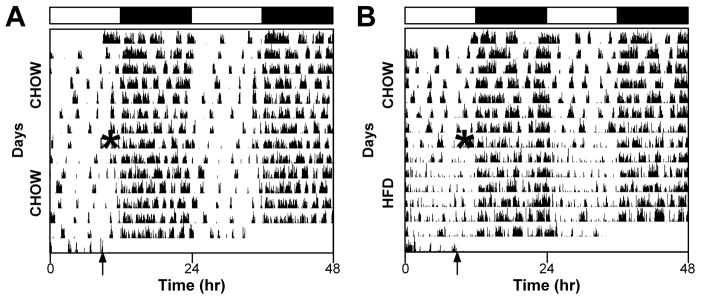Fig. 2.

A high-fat diet (HFD) alters the pattern of locomotor activity. Representative double-plotted actograms (5-min bins) of male heterozygous PER2::LUC mice maintained in a 12-h light/12-h dark cycle (light and dark indicated by black and white bars, respectively, above actograms). General activity was continuously monitored with passive infrared sensors. All mice were provided with chow ad libitum for the first week. After 1 week, chow was replaced with either fresh chow (A) or a HFD (B). The times when food was replaced are indicated by asterisks on the left halves of the actograms. The arrows indicate when the mice were removed from the light-tight boxes for tissue culture. The actograms shown are typical examples from a total of chow (n=7, HFD: n=7 mice).
